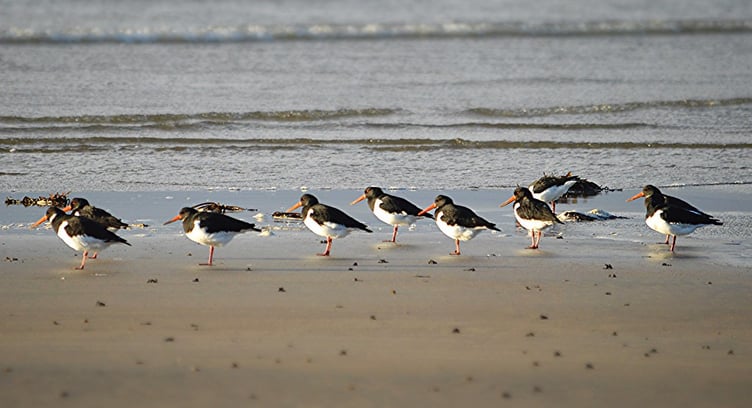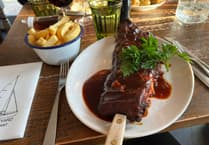Are you and your dog unintentionally harming birds on our beaches?
We are incredibly lucky in the Isle of Man to have so many wonderful beaches to enjoy, especially at this time of year when dogs and their owners can exercise on them without any seasonal restrictions.
This is also a time of year when our beaches are home to many visiting shore and sea birds - geese, ducks, gulls and species that many people may struggle to identify such as dunlins, turnstones and ringed plovers.
Our beaches provide a place for them to feed at low tide, roost at high tide, and bathe and drink where streams enter the sea.
Many birds will have travelled hundreds of miles to enjoy our warmer, richer waters in winter, with sandy and muddy beaches providing a wealth of food.
Most dog owners would not intentionally harm wild birds, but our winter visitors are being adversely affected by unintentional disturbance from dogs.
The presence of dogs on a beach (on or off lead) causes an instinctive reaction to fly in many birds, especially those that experience predation from Arctic foxes for half of the year.
This repeated disturbance is harmful because it causes birds to use more energy (and essential calories) moving from place to place, and it also reduces their feeding time.
This in turn leads to poor body condition which affects their survival on their long spring migration journeys, and ultimately it compromises their breeding success.
This is why many populations of wildfowl and shore birds are falling. Please try not to take your dog onto an area of beach where there are birds on, or by, the water.
At high tide avoid upper beaches where ground-nesting birds roost (birds such as the curlew and the oyster catcher), and at lower tides avoid crossing the beach where birds are feeding.
Hotspots of particular concern, where our winter migrants are seen most often, include the Point of Ayre and beaches in the far north, either end of Castletown beach, Derbyhaven beach, the beach at the bottom of Fisher’s Hill and Gansey beach.
Being vigilant around seabirds is still necessary because the current strain of Highly Pathogenic Avian Influenza (now named HPAI H5N5) is prevalent in the UK and is still having a significant impact on seabird populations since this strain first appeared in 2021.
Millions of birds have died, and because many species don’t reach breeding age until they are about five years old. Some also have small numbers of offspring, meaning their populations will take a long time to recover (and some may never return to pre-epidemic numbers).
And when you consider that many seabird species were already in decline before ‘bird flu’ turned up, due to unsustainable fishing practices, warmer seas, offshore windfarms and predatory mammal species (from rats to hedgehogs), the need to do everything we can to help them becomes even more apparent.
Spare a thought, too, for the captive birds (both commercially produced and owned as a hobby) that are being culled in their thousands in the UK, and for those that are used to living free range and now have to be housed indoors as part of biosecurity restrictions currently in place across England, Wales and Scotland; with Northern Ireland introducing the same restrictions last weekend.
The Isle of Man is, mercifully, still free of avian influenza restrictions, but all bird keepers are urged to remain vigilant and to observe strict hygiene regimes.
These measures also apply to those of us who feed our garden birds – bowls should be cleaned regularly, and hands should be washed thoroughly afterwards.




